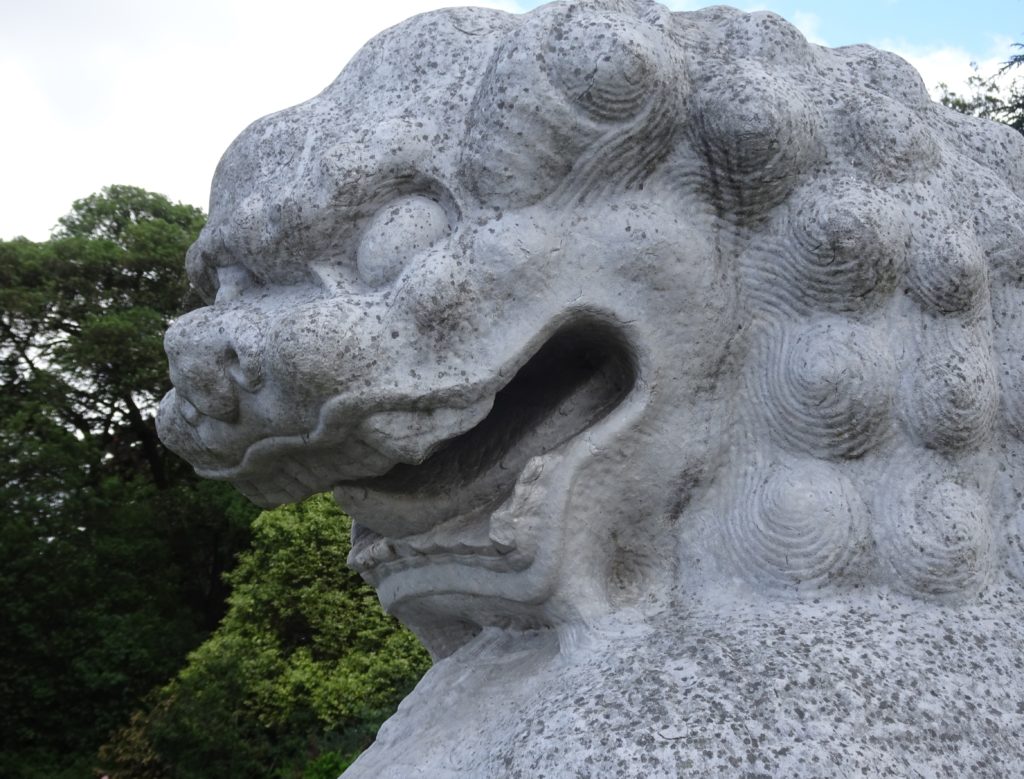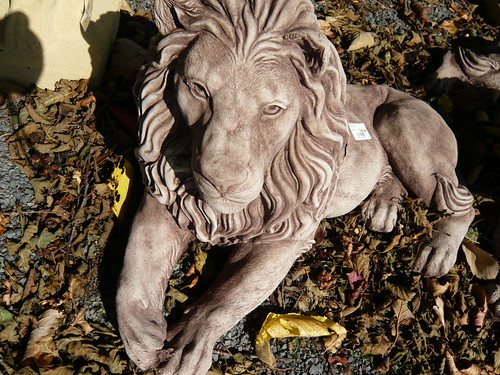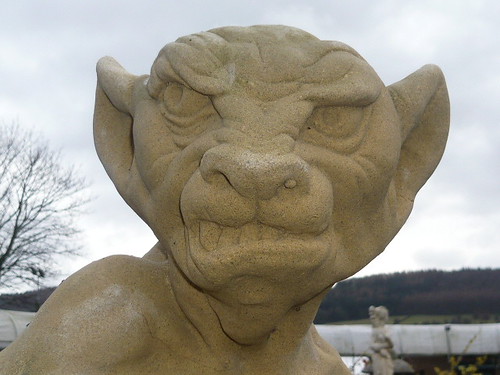Lions or Griffins Sculpted in your Garden
I saw this lion at our local garden centre. He was guarding the entrance and looked the ferocious part. But there aere more interesting sculpture displays this summer 2019 in some bigger garden spaces. The Yorkshire sculpture park has a Damien Hirst outdoor sculpture at their current exhibition and Kew Garden is featuring Dale Cilhuli glass sculptures. Newby Hall in North Yorkshire has contemporary sculpture which showcases the best of British in a woodland setting.
Stone Sculpture Pros and Cons
- Natural stone looks good in the right place. It creates a better effect when local stone is used
- Stone looks good in the right place. It creates a better effect when local stone is used. Aim to achieve a material that is sympathetic to the area.
- Reconstituted stone looks good in the show room and for several seasons. For some reason it weathers more rapidly or looks less crisp a couple of winters later.
- Good stone that has been well carved can be very expensive
- Stone is heavy and not easy to move around or steal.
- Sculptures without natural sunlight get more moss and lichen than well lit well located sculptures.
- Good sculpture can provide both a talking point and a feature or focal point in your garden design.

Sculpture Comments
- Large scale sculptures work best in larger gardens. It is worth balancing scale as too small a sculpture can get lost from view.
- White or light stone sculptures should be set against a dark background
- Small sculptures can be mounted on a plinth for greater effect.
- Sculptures work well in pairs. Natural items work best in odd numbers
- Old and valuable stone items should be insured, bolted down or alarmed. Thieves will steal anything!
- A resin and composite stone sculpture like that below will cost significantly less than a stone sculpture.
- Cheaper sculptures tend to lose the sharpness of carving or molding.

